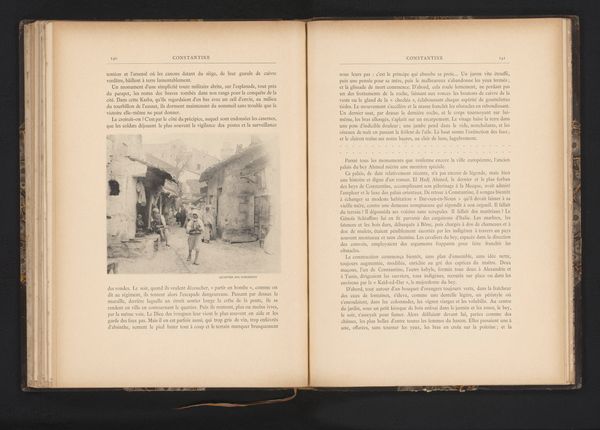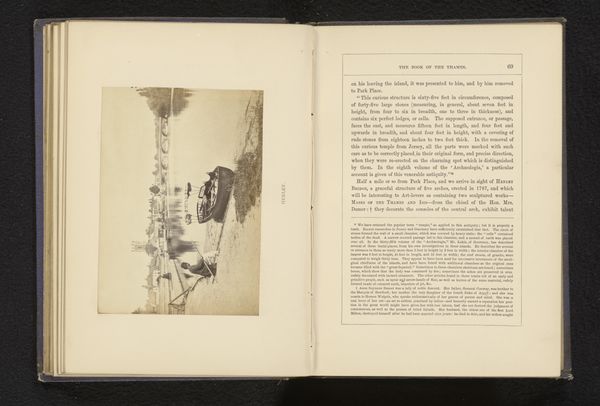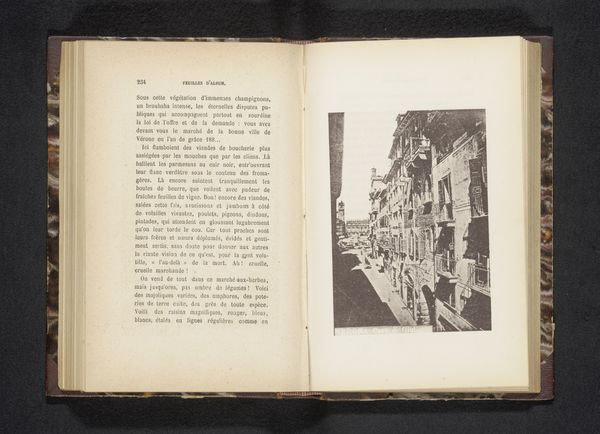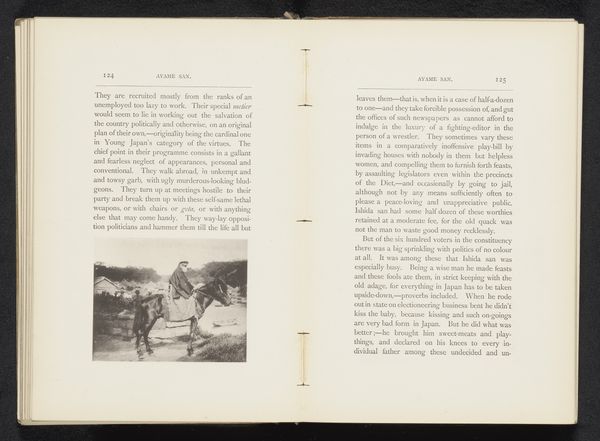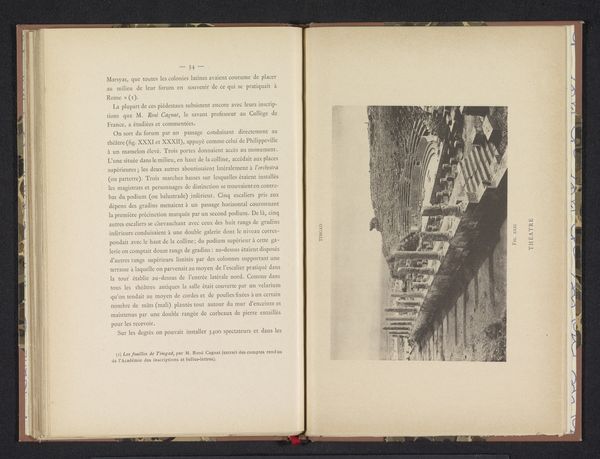
Gezicht op (vermoedelijk) een straat in de wijk Ginza te Tokyo before 1892
0:00
0:00
gelatin-silver-print, photography, gelatin-silver-print
#
gelatin-silver-print
#
asian-art
#
photography
#
gelatin-silver-print
Dimensions: height 69 mm, width 86 mm
Copyright: Rijks Museum: Open Domain
Curator: William Kinnimond Burton's gelatin silver print, taken before 1892, is titled "Gezicht op (vermoedelijk) een straat in de wijk Ginza te Tokyo," or "View of (presumably) a street in the Ginza district of Tokyo." It's a fascinating window into a moment of urban transformation. Editor: My first impression is that it's a study in contrasts. The light is almost brutally bright, highlighting the textures of the street and the formality of the figures in their kimonos. There's a clear sense of old versus new. Curator: Exactly. This image exists in a cultural moment defined by Japonisme. We see Japan opening itself to the West, but grappling with what aspects of tradition to retain and which to discard. Editor: Burton's technical process plays into this tension. The sharp detail possible with gelatin silver hints at modernity, but it’s capturing a street scene dominated by traditional dress and what seem like older, low-rise buildings. What about the physical labor of making photographs at the time? Curator: The materiality and labor involved are intriguing. Photography itself was relatively new in Japan and required imported materials. Burton had to engage local practitioners. This collaboration suggests a power dynamic inherent in the act of image-making. Who is Burton speaking to? Editor: Absolutely. It prompts consideration of the socio-economic structures supporting both the artist and the craftspeople involved in the creation and dissemination of this print. Was there exploitation of the medium through low wages? What about chemical hazards in the photographic lab? These things can lead to questioning issues around gender or other kinds of structural inequality as well. Curator: Precisely. This photo encapsulates the shifting cultural and economic landscape of Meiji-era Japan. The decision to capture this street becomes significant—it’s not merely a picturesque scene, but a negotiation of identity. Editor: Indeed. And reflecting on these themes—consumption, labor, class —opens it up to much broader, contemporary concerns. Curator: Seeing this photograph today challenges us to think about the complex legacies of cross-cultural exchange. It's more than just a historical record, but an ongoing conversation. Editor: It also invites a closer look at the ethics involved in image-making itself.
Comments
No comments
Be the first to comment and join the conversation on the ultimate creative platform.

